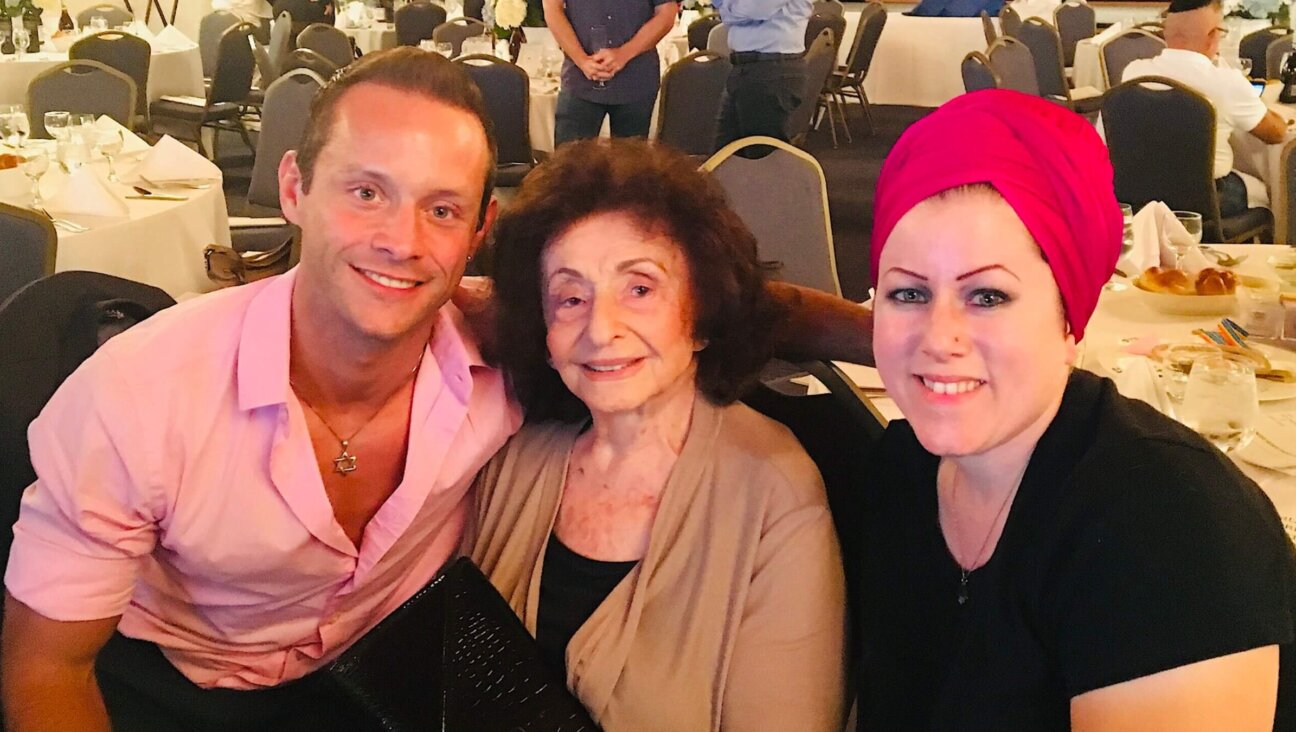Looking for a free, online resource to learn Yiddish?
Courtesy of YiddishPOP
Whether you’re starting from scratch or have a few years under your belt, there are a slew of videos, games, podcasts and guides online to help you on your Yiddish learning journey, many of which have come into existence only in the past few years.
Here’s a round-up of the best ones out there now, and how to get the most out of them.
Learning the alef-beys (Yiddish alphabet)
The vast majority of Yiddish texts that you’ll encounter will be in Hebrew letters, so it’s important to learn them before going forward. But even if you can read Hebrew, you still need to learn the Yiddish version of the alef-beys. There are significant differences between how the alphabet is used in Hebrew and how it’s used in Yiddish.
To help you learn it, it’s best to learn the standard English transliteration of Yiddish first. (It’s not always so intuitive: “ey” is pronounced “ay” as ib “bay”, while “ay” is pronounced like the word “eye.”) This is important because there are multiple ways of pronouncing Yiddish and the transliteration will help you tell them apart.
-
- Learn the transliteration through YIVO’s guide to the alef-beys. Take note of how each of the letters is pronounced, and the transliteration (romanization) attached to each letter.
-
- Use the Yiddish Book Center’s Alef-beys chart to hear both how the letters sound and what their names are. Pay attention to the cursive forms of the letters, as they are necessary for reading or writing anything handwritten.
-
- Use Duolingo’s Yiddish course, but specifically their alef-beys lessons (marked by an א on your screen), to help you learn to write the letters, as well as drill you on their sounds. Be mindful that Duolingo uses the Hasidic pronunciation, so some of the letters will have different sounds than the “standard” pronunciation you’ll hear in other resources.
Getting going
The next step is to learn basic conversation, grammar and vocabulary.
-
- YiddishPOP, a series of web videos starring a girl named Nomi and her best friend, a robot named Moby, will take you right to basic conversation lessons, all in Yiddish. There are also videos to help you review vocabulary and conversation. YiddishPOP was created in 2013, and recently completed its entire series.
-
- The YouTube series created by Motl Didner of the National Yiddish Theater Folksbiene, called 15 Minute Yiddish, is taught in English. In these entertaining episodes, Didner plays the role of teacher and his diverse group of students who take his class. He began the series in 2020.
-
- Duolingo’s Yiddish course, which came online in 2021, is great for drilling word order. It gets you to translate sentences from English to Yiddish and back over and over again, and teaches a lot of vocabulary along the way (but as mentioned above, all in a Hasidic pronunciation.) In the most advanced lessons, you’ll also learn words unique to Hasidic Yiddish. However, since there are no grammatical explanations, it’s more helpful to learn grammar with YiddishPOP and 15 Minute Yiddish.
-
- Proste Yiddish (Simple Yiddish) is a podcast designed for intermediate learners. Esther Singer, a Yiddish instructor in Melbourne, reads stories and interviews guests in easy Yiddish and includes a transcript and glossary for difficult words. The show started a year ago.
-
- Yiddish Wordle (Vertl) is the Forverts’ own version of the popular Wordle game, where you guess the word in six tries. It’s a fun way to warm up your Yiddish brain and learn a little vocabulary.
-
- Forverts editor Rukhl Schaechter’s YouTube series Yiddish Word of the Day teaches you new words and their associated expressions in a bite-sized, easy-to-digest way. The series started in 2020.
-
- Yiddish far kinder is a collection of resources created by Judith Nysenholc, who used them to teach children at a Yiddish folkshul and Kinneret Day School in New York. You can supplement the beginning of your learning with interactive printouts (fill-in-the-blanks, matching columns, bingo games) that mostly revolve around Jewish holidays.
- Yiddish far kinder is a collection of resources created by Judith Nysenholc, who used them to teach children at a Yiddish folkshul and Kinneret Day School in New York. You can supplement the beginning of your learning with interactive printouts (fill-in-the-blanks, matching columns, bingo games) that mostly revolve around Jewish holidays.
The next level
Eventually, you’ll get to the point where you can understand a great deal of Yiddish, even without finishing all the courses. You’ll want to supplement your learning with content that will keep you actively engaged and help you dive deeper into the Yiddish world of today.
There are many resources for advanced learners, but here are a few that are online and free.
-
- Dos Yidishe Kol, or The Yiddish Voice, is a radio show broadcasted in Boston and available online. Host Mark David interviews guests and plays Yiddish music.
-
- Yiddish 24 is a Hasidic website and app that brings you lots of music, talk shows and analyses throughout the day. Pinchus Glauber, whose show you can find in the “analysis” section, is particularly good — he explains complicated aspects of politics and science in clear Yiddish.
-
- Israel’s national radio network KAN devotes an hour a week to Yiddish programming on its foreign language REKA station. Avrumi Zaks hosts the show, called KAN Yiddish, interviewing guests and talking about current affairs in the Yiddish world and in Israel.
-
- In Sweden, where Yiddish has been a national minority language since 2000, Tomas Woodski has hosted two TV shows in Yiddish on the Swedish national television: “Woodskis värld” (Woodski’s World) which ran for from 2019 to 2021, and Möte med (Meeting with) which was launched in 2022.
-
- Yidish haynt (Yiddish Today) is a YouTube series in which the League for Yiddish’s Eli Benedict interviews people involved in Yiddish culture. The conversation is conducted in Yiddish.
-
- Former Forverts editor Boris Sandler’s Yiddish Branzhe is an online literary magazine that began in 2017. One featured writer is world-famous classical pianist Evgeny Kissin.
-
- The Forverts! Stay up-to-date with our news about Yiddish culture, opinion pieces, book reviews and occasionally, new poetry — all in Yiddish. If you don’t know a word you just click on it and the English translation appears.
- The Forverts! Stay up-to-date with our news about Yiddish culture, opinion pieces, book reviews and occasionally, new poetry — all in Yiddish. If you don’t know a word you just click on it and the English translation appears.
And of course, keep a lookout for events online and in your area where you can practice your Yiddish by going to our Yiddish Community Calendar.
Mitn rekhtn fus!


























